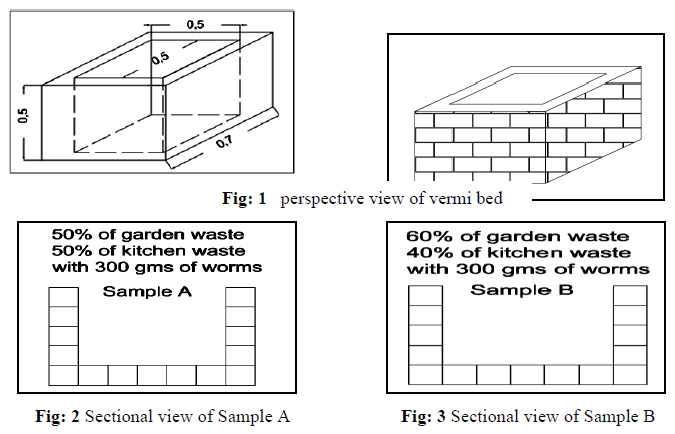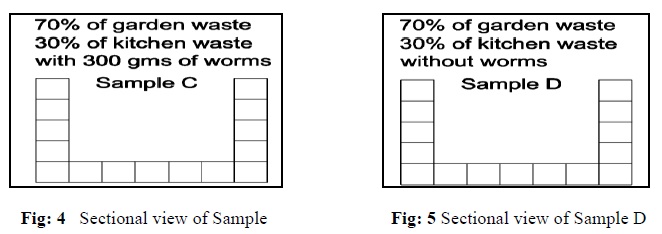





Published on Nov 30, 2023
Solid Waste Management is a discipline associated with control of generation, storage, collection, transfer, processing and disposal of solid waste materials in a way that best addresses the range of public health, conservation, economics, aesthetic, engineering and other environmental considerations. Several studies indicate that much of the municipal solid waste from developing countries are generated from households (55–80%). followed by commercial or market areas (10–30%) with varying quantities from streets, industries, institutions among others. Waste from these sources are highly heterogeneous in nature and have variable physical characteristics depending on their sources; notably in their composition are food waste, yard waste, wood, plastics, papers, metals, leather, rubbers, inert materials, batteries, paint containers, textiles, construction and demolishing materials and many others which would be difficult to classify. The solid waste is mainly classified into Non-biodegradable and biodegradable waste. Non-Biodegradable Waste, a substance which cannot be changed to a harmless natural state by the action of bacteria, and may therefore damage the environment. The best way to treat the non biodegradable waste is recycling & reuse.
A large proportion of the waste produced by businesses and institutions is organic waste. This includes food waste, yard clippings, paper, plastic etc. It is often sent to the landfill, where it produces methane gas. An alternative to dumping organics in landfills is composting, which converts the waste into a nutrient-dense mixture that can be applied to soil for gardening and landscaping purposes. Composting is also very useful for recycling kitchen wastes, leftover crop residues, weeds, and manures. Organic waste such as apple pumice, lake weeds, leaves, and grass clippings can be composted. These are some of the broad benefits to plant growth that are attributed to compost. The educational institutions represent the main components of sustainability promotion in our society. Waste management is one of the challenges that our institutions have to face in accomplishing sustainability goals. The main aim of our project is to treat biodegradable (organic waste) by composting as a part of Solid Waste Management at institutional level in SDMCET Dharwad.
Keywords : Solid Waste Management, Non-biodegradable and biodegradable waste
1. To study the Solid waste management at the institutional level and to convert biodegradable waste into compost.
2. To study the effectiveness of composting of biodegradable waste of the institution with various combinations.
3. To study the feasibility of implementing the outcome of this project for decentralization at ULBs level.
1. Studying the Present scenario of SWM (case study-SDMCET DHARWAD)
2. Quantitative survey of waste generated in the institution.
3. Site selection for composting.
4. Collection of waste (Kitchen waste and garden waste).
5. Record keeping of garden waste and kitchen waste on daily basis.
6. Treating biodegradable waste by vermicomposting
7. Duration required: 30 – 45 Days.
8. Carry quality analysis by taking NPK values from the obtained compost.
Preparation of pit for decomposition
Our group started the vermiculture project on 18th February 2018 with the clean-up and preparation of vermiculture beds located beside the mess, at SDMCET Campus. There are three vermi beds A, B, C and one pit ‘D’ without worms, 1x0.5m in size and made with paving blocks. We have started to gather substrates.


From 19th February 2018 to 6th March 2018 we have collected the leaf waste of 160kg from the gardens and kitchen waste of 120kg from our college mess and disposing it to the prepared pits by daily weighing the waste.
Before adding the substrate, make sure that the materials are cut or break down into smaller pieces. Finer materials could easily decompose (partial decomposition). We mixed the different media together, well for the worms to easily digest these. The moisture content was maintained and the vermi beds were covered with tarpaulin cover to initiate anaerobic decomposition. The substrates were kept in the beds for 15 days from 6th March 2018 to 21st March 2018 before adding the vermi worms. It took 10 to 15 days to complete anaerobic decomposition and after that they are ready for worm consumption.
Red wrigglers are smaller is size of about 3-4 inches long is average length. They have alternating bands of darker and lighter red and they respire through their skin. Since they don’t in hole they must remain wet at all times. A mature red wriggler (3 months old) can produce two to three cocoons per week. Cocoons take up to 11 weeks to mature and hatch. They eat over half of their body weight every day.
After 15 days upon adding the substrates into the vermi beds, we introduced the vermi worms into the substrate on March 21st, 2018 and also we used the Red wriggler (Eisenia foetida) in our vermicompost. Aerobic decomposition lasts for 35 – 45 days depending on the materials used and the ratio of the worms to the substrate. In our case, we have a total of 70 kilograms of substrate, each bed enough to feed a half kilogram of worm for 35 – 45 days.
Within the period of April 9 to 4 May 2018, we moistened (not soggy) the substrate regularly to provide the right moisture (60 - 80%) for the vermi worms to grow and multiply. Feeding Vermi worms after introducing the red wrigglers, by placing vegetable wastes, leaves and Cow dung. We placed the vegetable wastes in a different place each time for the worms to easily feed into it. After 35 – 45 days, the red wrigglers have eaten the food waste leaving behind worm casting or compost.
Harvesting will commence 35 to 45 days after stocking of worms. Prior to harvest, we refrained from watering the substrate for the last three days to ease the separation of castings from worms and likewise preventing the castings to become compact. On May 4, we had the first harvest of the vermicast or the worm manure.
The production of bio-degradable organic waste is about 45 – 50% and its safe disposal becomes the current global problem. Meanwhile the rejuvenation of degraded soils by protecting topsoil and sustainability of productive soils is a major concern at the international level. Earthworms can serve as tools to facilitate these functions.
The utilization of vermicompost results in several benefits to farmers, industries, environment and overall national economy. Vermiculture converts farm wastes into organic fertilizer, making it an environment-friendly technology and increases crop yield and lessens dependence on chemical fertilizers thus mitigating climate change.
Vermiculture can be made into a livelihood program and become a source of extra income through selling the vermicast and also the vermi worms.
1. The quantitative study revealed the total solid waste generation in the SDMCET is 369kg/day by 3500 population in which 238kg/day is biodegradable waste and 131.5kg/day is non biodegradable waste.
2. The average waste generation in SDMCET is 0.2 kg/head/day which is minimum when compared to the average waste generation throughout India is 0.2- 0.8 kg/head/day.
3. The study also revealed that the biodegradable waste consists of 65% which can be reduced by composting process and the rest of 35% is non biodegradable waste in which some part is been sent to recycling process and some part been sent to landfill.
4. The analysis revealed that there is decrease in the level of pH from 9.6 to 7.3 which shows the maturity condition of compost.
5. There is decrease in organic content from 76.7 to 35.4 which shows 53% of the substrate has been digested.
6. The results for nutrient content of compost is mentioned in the table no.[10] which in significant to the permissible limit of the compost and in which sample A shows the good results compared to sample B, C & D.
7. The outcome of the project is approached to implement at a decentralized level and has been started to compost in the R. T. Enclave Apartment, Dharwad which has 32 flats. On an average they generate about 25kg/household/month of biodegradable waste which is about 800kg/month waste generated in the apartment and can been treated by composting process.